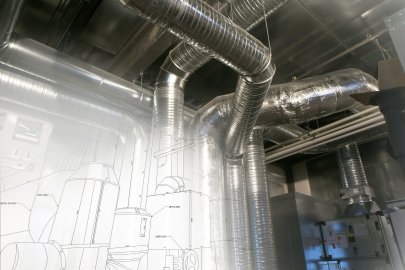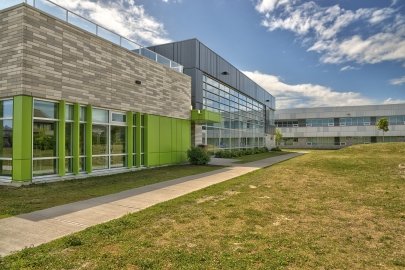
Supporting Efficient and Healthy School Investments
The Building Technologies Office (BTO) supports investments by schools and school districts to improve the efficiency and health of their facilities through the Efficient and Healthy Schools Program, enabling equitable access to energy resources and opportunities. Almost 100,000 public K–12 schools represent 9% of commercial building energy consumption. Through this program, BTO can deliver targeted assistance to help decrease the energy burden on our schools.
Led by BTO in close collaboration with the Environmental Protection Agency and the Department of Education, the Efficient and Healthy Schools program provides technical assistance for schools seeking to implement high-impact energy efficiency and indoor air quality improvements in their buildings to reduce energy bills and improve student and teacher health. To date, the program has worked with 202 participants from schools and districts in 45 states, representing over 5 million students and over 8,400 schools—70% of which are eligible for federal financial assistance through Title I.
The Efficient and Healthy Schools program recognizes schools for their exemplary retrofit projects, best practices in building assessment and operational performance, and goal setting to achieve sustained, long-term school building improvements. Learn more about honorees:
History
Formed during the height of the COVID-19 pandemic, the Efficient and Healthy Schools Campaign was established to help provide awareness to schools about substantial public funding allocated for school infrastructure improvements through the American Rescue Plan and the 2021 Coronavirus Response and Relief Supplemental Appropriations Act. The inaugural year of the Efficient and Healthy Schools Campaign focused efforts on enhancing indoor air quality and incorporating efficient HVAC technologies into educational facilities. During its second year, the campaign’s focus broadened to include energy efficiency, health, emissions reduction, and resilience.
Why Are School Facilities So Important?
K–12 school facilities support a multitude of services, including education, voting and polling, emergency shelter, and community gatherings. They also represent the second-largest sector of public infrastructure spending, after highways.
Unfortunately, the 2021 American Society of Civil Engineers’ 2021 Infrastructure Report Card rates our nation’s school facilities in D+ condition, and a June 2020 GAO report found that about half of public school districts are struggling to upgrade and maintain key building systems that ensure facilities are free of health hazards. The GAO report found that 41% of school districts need to update or replace heating, ventilation, and air conditioning (HVAC) systems, and half of the schools visited by GAO had HVAC-related problems, such as leakage and floor and ceiling damage.
Two systematic scientific reviews (Li et al. 2007; Luongo et al. 2015) concluded that inadequate building ventilation is associated with the increased risk of transmission of respiratory infections (including COVID-19 and many others). Several studies (Mendell and Heath 2005; Fisk 2017; Brink et al. 2020 have also found that breathing fresh air is critical for keeping students alert and healthy, while spaces with low ventilation rates are associated with lower average daily attendance, slower speed in completing tasks, and higher rates of suspension (Wyon and Wargocki 2013). In addition, extensive research compiled by the 21st Century School Fund has linked school facility deterioration to negative impacts on both student and teacher performance. These health and safety problems disproportionately impact schools in disadvantaged communities, which also contend with dirtier outdoor air and are less likely to have dedicated facility managers.
Upgrades to school facilities can help remedy indoor air quality issues, improve comfort and health conditions, support better student learning, and significantly reduce school energy bills. The Efficient and Healthy Schools website provides a suite of technical and financial resources to help school districts make efficiency and health-related improvements to their schools.
Join the Program
We invite you to join a growing network of schools, school districts, and supporting organizations in the Efficient and Healthy Schools Program. You’ll find regular working groups, peer-to-peer discussions, and technical support on practical solutions that improve energy performance, reduce carbon emissions, and promote a healthy learning environment in your school.
-
 Find federal and state resources for efficient and healthy retrofits.
Find federal and state resources for efficient and healthy retrofits. -
 Many K-12 school facilities need to update or replace heating, ventilation, and air conditioning (HVAC). HVAC is integral to learning and health in schools.
Many K-12 school facilities need to update or replace heating, ventilation, and air conditioning (HVAC). HVAC is integral to learning and health in schools. -
 Energy retrofits may employ one or more energy-efficiency measures to maximize occupant comfort and reduce building energy use.
Energy retrofits may employ one or more energy-efficiency measures to maximize occupant comfort and reduce building energy use. -
 Packaged efficiency measures can maximize upgrades to key building technologies and systems in school facilities.
Packaged efficiency measures can maximize upgrades to key building technologies and systems in school facilities.


